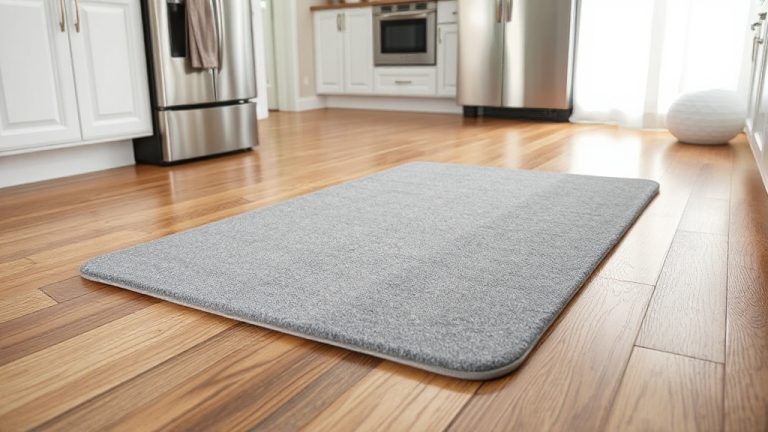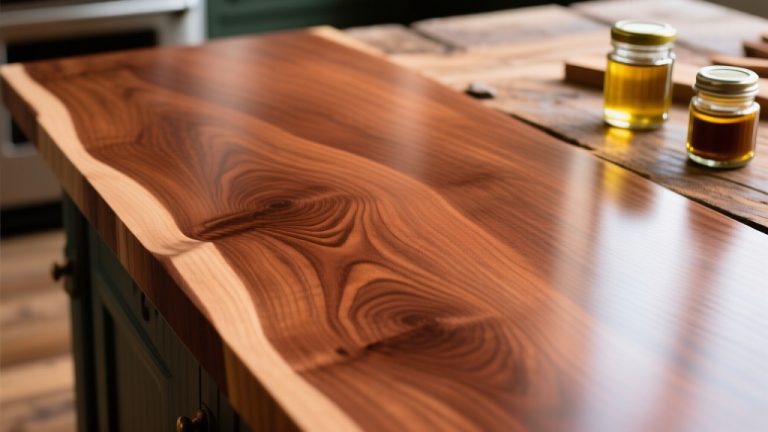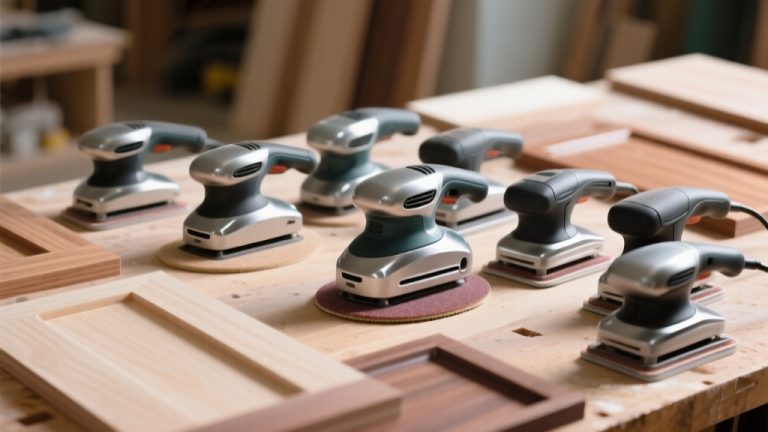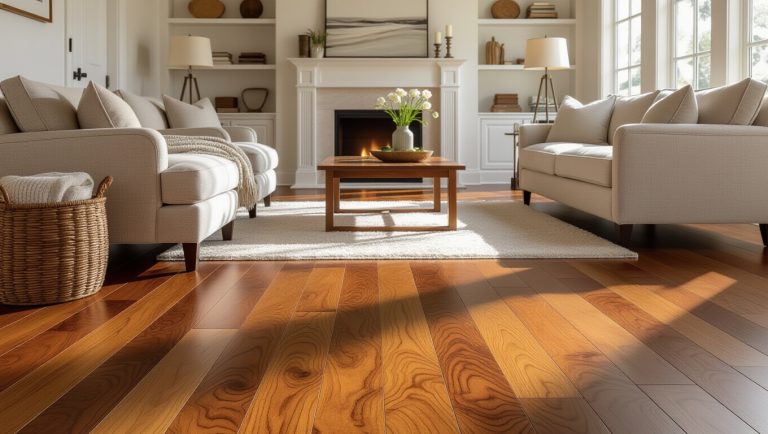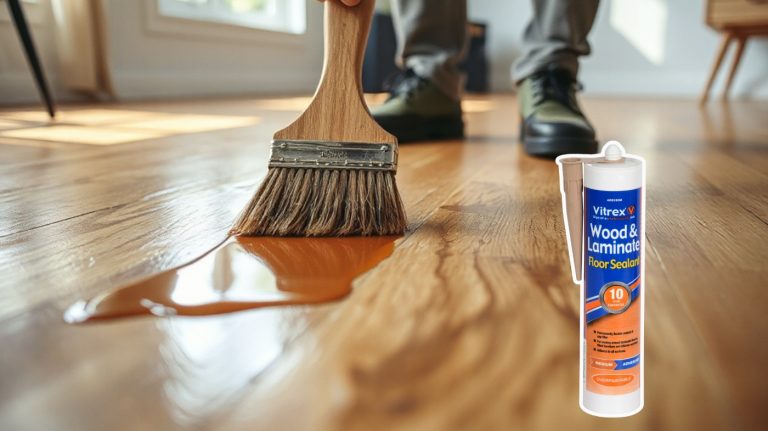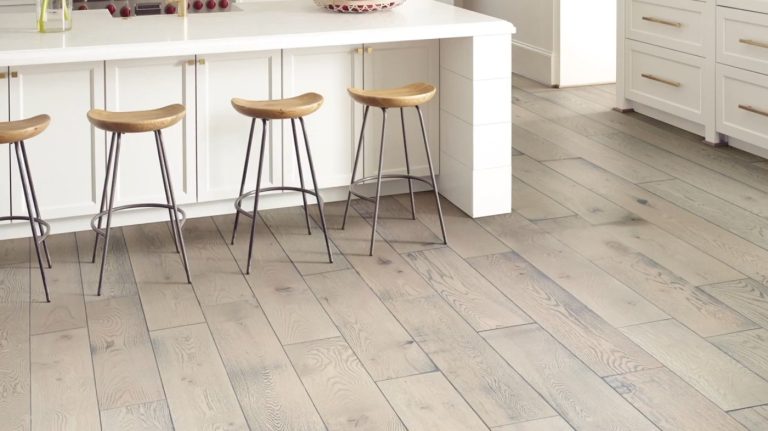Best Adhesives for Veneer – Strong, Reliable & Easy to Use
You want adhesives that deliver strong, reliable bonds without hassle. Try 3M Fastbond Contact Adhesive 30NF for quick, heat-resistant bonding, or Titebond Cold Press Glue to minimize bleed-through.
Clear-Tite offers fast-setting strength, perfect for laminate. For heavy materials, Rapid Loc provides waterproof, instant hold, while 3M Max Strength 90 bonds multiple surfaces with impressive durability.
These choices balance ease and performance—keep exploring to find the perfect fit for your veneer needs.
| Image | Name | Editor's Rating | Price |
|---|---|---|---|

|
3M Fastbond Contact Adhesive 30NF, Neutr...
|
|
|

|
Titebond Cold Press Veneer Glue, Bonds V...
|
|
|

|
RH Adhesives Clear-Tite Contact Cement, ...
|
|
|

|
Rapid Patch Rapid Loc Concrete and Venee...
|
|
|

|
3M Max Strength 90 Multi-Surface Contact...
|
|
Key Takeaways
- 3M Fastbond offers strong, heat-resistant bonds with a long open time, ideal for wood veneer applications requiring durability and repositioning flexibility.
- Titebond Cold Press glue minimizes bleed-through and provides controlled, durable adhesion for interior wood veneers with low odor and easy application.
- Clear-Tite sets quickly and withstands heat up to 250°F, making it suitable for veneers exposed to high temperatures and rapid bonding needs.
- Rapid Loc is a waterproof, non-toxic adhesive perfect for heavy or stone veneers, providing instant bond strength and long-term durability outdoors.
- 3M Max Strength 90 bonds multiple surfaces including wood and plastic with fast curing, heat, and water resistance, ideal for versatile veneer projects.
3M Fastbond Contact Adhesive 30NF, Neutral
- Bonds most foamed plastics, plastic laminate, wood, plywood and canvas to themselves and to each...
- Creates a very high strength, high temperature resistant bond with up to a four hour bonding range
- Adhesive can be applied by spray, brush or roller
If you need a strong, heat-resistant adhesive that works well with wood veneer and laminates, 3M Fastbond Contact Adhesive 30NF is an excellent choice. It’s a low-odor, water-based adhesive that bonds wood, plywood, plastic laminates, and canvas with high strength and durability.
You can apply it by spray, brush, or roller, making it versatile for various projects. Plus, it offers up to a four-hour bonding window and remains heat-resistant after curing. Its low VOC content and non-flammability in the wet state make it safer for you and the environment. Just avoid using it on drywall or metal.
Best For: Professionals and DIY enthusiasts needing a strong, heat-resistant adhesive for bonding wood veneer, laminates, foamed plastics, and canvas with low odor and environmental safety.
Pros:
- Low-odor and water-based formula for safer indoor use
- High strength and heat-resistant bonds with a long bonding window of up to four hours
- Versatile application methods including spray, brush, and roller
Cons:
- May require careful handling to ensure proper bonding within the four-hour window.
Titebond Cold Press Veneer Glue (32 oz)
- Economical Alternative to Contact Cement
- Minimizes Bleed-Through
- Interior Use
Choosing Titebond Cold Press Veneer Glue (32 oz) makes sense when you need a reliable adhesive that minimizes bleed-through on open-grained, unbacked wood veneers. This glue bonds veneers to flat surfaces like wood, particleboard, MDF, and plywood, making it perfect for large-scale cold press laminating.
You’ll appreciate its translucent glue line that keeps your finish clean and attractive. Safe to use, it cleans up with water and contains no harmful fumes, unlike contact cement. With moderate set speed and excellent bonding strength, it offers controlled, durable adhesion ideal for interior veneer projects.
Best For: woodworking professionals and hobbyists needing a safe, effective adhesive for cold press veneering on various porous surfaces without bleed-through.
Pros:
- Minimizes bleed-through on open-grained, unbacked wood veneers for a clean finish
- Water cleanup with no harmful or corrosive fumes, ensuring safe use
- Provides excellent bonding strength with a translucent glue line for aesthetic appeal
Cons:
- Moderate set speed may require longer clamp time compared to fast-setting adhesives
RH Adhesives Clear-Tite Contact Cement, 4 oz. Can for Laminate Flooring and More
- High Temperature Adhesive - We've designed the Clear-Tite Contact Cement formula to maintain its...
- Versatile Contact Cement - Use Clear-Tite to adhere a wide range of materials, including metals,...
- Fast Bonding Glue - After applying this adhesive cement to both surfaces, the bond should set in...
When you need a reliable adhesive that bonds quickly and withstands high temperatures, Clear-Tite Contact Cement is an excellent choice. This 4 oz. can by RH Adhesives works great for laminates, wood veneers, ceramics, and more.
It sets fast—about ten minutes after you apply it to both surfaces. Plus, it handles heat up to 250°F without losing strength. Whether you’re working with metal, glass, leather, or plastics, Clear-Tite offers waterproof, durable bonds trusted by professionals since 1949.
Just apply, wait, and press together for a strong, lasting hold on your veneer projects.
Best For: Professionals and DIY enthusiasts seeking a fast-setting, high-temperature resistant adhesive for laminates, wood veneers, ceramics, and a variety of other materials.
Pros:
- Sets quickly in about ten minutes for efficient project completion.
- Withstands high temperatures up to 250°F, maintaining strong bonds.
- Versatile use on multiple materials including metal, glass, leather, and plastics.
Cons:
- Only available in a small 4 oz. can, which may be insufficient for larger projects.
Rapid Loc Concrete and Veneer Bond Stone Veneer Adhesive (9.5 Ounces)
- ADHERES QUICKLY: Holds tight in less than 10 seconds
- POWERFUL ADHESIVE: Great for adhering heavy objects including ceramic, porcelain, glass, tile,...
- SIMPLE TO USE: Fits in standard caulking gun
You’ll appreciate Rapid Loc Concrete and Veneer Bond if you need a fast-setting adhesive that holds heavy materials like stone and tile securely within seconds. This waterproof, non-toxic adhesive bonds stone, tile, wood, and more, indoors or outdoors.
It fits standard caulking guns, becomes tack-free in 20 minutes, and fully cures in three days. Its medium to high viscosity ensures a strong, weather-resistant bond that won’t yellow and is paintable when dry.
At 9.5 ounces, it’s perfect for masonry, flooring, or repair work, delivering reliable performance with quick, durable adhesion you can count on.
Best For: homeowners, contractors, and DIY enthusiasts needing a fast-drying, waterproof adhesive for securely bonding heavy materials like stone, tile, and wood in both indoor and outdoor applications.
Pros:
- Sets quickly, holding materials in less than 10 seconds and becoming tack-free in 20 minutes.
- Waterproof, weather-resistant, non-toxic, and solvent-free, suitable for diverse environments.
- Paintable when dry with no yellowing, providing a clean, durable finish.
Cons:
- Full cure time of approximately 3 days may delay final project completion.
3M Max Strength 90 Multi-Surface Contact Adhesive (12.6 oz.)
- MAX STRENGTH spray adhesive provides a max bond in 10 minutes
- HEAT & MOISTURE resistant
- IDEAL FOR materials including laminate, wood, concrete, metal, rubber, heavy duty plastics
Looking for an adhesive that bonds quickly and holds strong on multiple surfaces? The 3M Max Strength 90 Multi-Surface Contact Adhesive is your go-to choice. It achieves maximum bond strength within 10 minutes and resists heat and water, ensuring long-lasting durability.
You can use it on laminate, wood, metal, rubber, concrete, and heavy-duty plastics—perfect for applying veneer, laminates, or even soundproofing projects. Its web spray application covers large areas efficiently, while the adjustable nozzle gives you precise control.
Plus, it meets strict VOC standards, making it an eco-friendly option for both pros and DIYers.
Best For: Professionals and DIY enthusiasts needing a fast-drying, strong adhesive for bonding a variety of materials like wood, metal, laminate, and plastics.
Pros:
- Achieves maximum bond strength within 10 minutes for quick project completion.
- Versatile for multiple surfaces including laminate, concrete, rubber, and metal.
- Environmentally friendly with low VOC emissions meeting CARB standards.
Cons:
- Spray application may require careful handling to avoid overspray or mess.
- Limited to 12.6 oz. size, which may not be sufficient for very large projects.
Top Adhesives for Veneer: Features and Benefits Comparison
| Adhesive | Bond Strength | Set & Cure Time | Heat & Water Resistance | Best Use Cases | Pros | Cons |
|---|---|---|---|---|---|---|
| 3M Fastbond Contact 30NF | Strong, heat-resistant | Long open time, up to 4 hours | Heat resistant, durable | Wood veneer, laminates, foamed plastics | Low odor, versatile application methods | Not for drywall/metal, requires timing |
| Titebond Cold Press Glue | Controlled, durable adhesion | Moderate set, longer clamp time | Low moisture resistance | Interior veneers, cold press laminating | Minimizes bleed-through, easy water cleanup | Not for non-porous or outdoor use |
| Clear-Tite Contact Cement | Fast, reliable bond | Sets fast (~10 mins) | Heat resistant (up to 250°F) | Laminate, wood veneer, ceramics | Quick setting, versatile on many materials | Small can size, precise timing needed |
| Rapid Loc | Waterproof, instant hold | Tack-free in 20 mins, cures in 3 days | Weather and water resistant | Heavy materials like stone and tile | Fast setting, paintable, non-toxic | Longer full cure, viscous texture |
| 3M Max Strength 90 | Strong, multi-surface | Fast curing, max strength in 10 mins | Heat & water resistant | Wood, metal, laminate, plastics | Versatile, eco-friendly, fast bond | Spray application overspray risk |
Key Considerations for Selecting the Best Veneer Adhesive
When you’re picking out adhesive for veneer, think about:
Bond Strength Requirements
How strong does an adhesive need to be to keep your veneer firmly in place? You want an adhesive with enough bond strength to hold the veneer securely under everyday stresses and environmental factors.
For heavy or thick veneers, prioritize adhesives with high shear and tensile strength to avoid delamination or lifting over time. Also, consider curing time and initial tack; faster-setting adhesives offer quicker handling strength for tight schedules.
Before committing, test bond strength on similar materials to ensure effectiveness. Finally, pick an adhesive that resists heat, moisture, and aging, so your veneer stays intact long-term.
Meeting these bond strength requirements ensures your veneer not only looks great but also lasts through years of use without failure.
Material Compatibility
Bond strength matters, but it’s equally important to choose an adhesive that’s compatible with the materials involved. You need an adhesive formulated specifically for your veneer type—wood, plastic, or stone—to guarantee a solid bond.
Also, consider the substrate surface; porous or non-porous surfaces demand different adhesives for peak adhesion. Make sure the adhesive maintains its properties under conditions like humidity, temperature shifts, or exposure to water to avoid bond failure.
You’ll want to verify the adhesive won’t damage or discolor either the veneer or the substrate. Finally, while application methods will be discussed later, keep in mind that compatibility with your veneer and surface materials is the first step to achieving a durable, professional finish every time.
Application Method
Since different adhesives require specific application tools like brushes, rollers, or spray guns, you’ll want to choose one that matches your preferred method to guarantee strong, even coverage. The right application method not only affects how evenly the adhesive spreads but also impacts your control over bonding time and strength.
Some adhesives let you work wet, giving you the flexibility to reposition veneer before they set, while others demand precise placement as they cure quickly on contact. Using the correct tool and method minimizes mess and ensures a uniform bond.
Drying and Curing Time
When choosing an adhesive for veneer, you’ll want to contemplate both drying and curing times carefully. Drying time tells you how quickly the veneer will set and become ready for handling, typically ranging from 10 to 30 minutes for fast-drying adhesives.
However, curing time is essential—it determines when the bond reaches full strength and durability, which can take from several hours up to days. While fast-drying adhesives let you work faster, they often need longer to cure completely for maximum resilience.
Keep in mind that longer curing usually results in stronger, more durable bonds, especially important for heavy or load-bearing veneers. Knowing the difference between initial drying and full curing helps you handle your project properly and guarantees the veneer lasts over time.
Environmental Safety
Although selecting the right adhesive for veneer involves many factors, prioritizing environmental safety protects both your health and the planet. You should choose adhesives with low VOC emissions to reduce harmful fumes and improve indoor air quality.
Water-based adhesives are generally safer and more eco-friendly than solvent-based options, so they’re a smart pick. Make sure the adhesive complies with environmental regulations like CARB VOC standards to ensure safe use in enclosed spaces.
Opt for non-toxic, solvent-free formulas to minimize health risks during application and curing. Finally, verify if the adhesive is biodegradable or uses environmentally sustainable formulations to lessen its long-term impact.
Heat and Water Resistance
If you want your veneer projects to last in tough conditions, you need adhesives that resist heat and water effectively. Adhesives with high heat resistance maintain their bond integrity even above 140°F, preventing delamination or failure.
At the same time, water-resistant formulas withstand moisture and humidity, perfect for outdoor use or damp areas like kitchens and bathrooms. Choosing an adhesive that combines both heat and water resistance ensures your veneer stays firmly bonded despite temperature fluctuations and repeated moisture exposure.
This durability reduces the risk of repairs or reapplication, saving you time and effort. When selecting your adhesive, prioritize these qualities to create strong, long-lasting veneer bonds that can handle the challenges of heat and water without compromising performance.
Frequently Asked Questions
Can These Adhesives Be Used on Outdoor Veneer Applications?
Yes, you can use these adhesives for outdoor veneer applications, but you’ll want to choose ones specifically rated for exterior use. Look for waterproof or weather-resistant formulas to guarantee the bond holds up against moisture, temperature changes, and UV exposure.
If you’re working outdoors, make sure the adhesive cures fully under the conditions you expect. Proper surface preparation and clamping also help you get a strong, lasting bond outside.
How Long Do These Adhesives Take to Fully Cure?
Most veneer adhesives fully cure within 24 to 48 hours, but some quick-dry options set in as little as 30 minutes. You’ll find that polyurethane adhesives often take about 24 hours to cure completely, while PVA glues usually need 12 to 24 hours.
Keep in mind, temperature and humidity can speed up or slow down curing times, so it’s best to follow the manufacturer’s recommendations for ideal results.
Are These Adhesives Safe for Use on Food-Contact Surfaces?
Yes, you can safely use many veneer adhesives on food-contact surfaces, but you need to verify that the adhesive is FDA-approved or labeled as food-safe.
Avoid adhesives with harmful chemicals or strong odors that might contaminate your food. Always follow the manufacturer’s instructions for curing time and ventilation.
If you’re unsure, opt for adhesives specifically designed for kitchenware or cutting boards to ensure safety and durability.
What Is the Shelf Life of Unopened Adhesive Containers?
You’ll find that unopened adhesive containers typically last between 12 to 24 months, depending on the type and brand. You want to store them properly—cool, dry places away from direct sunlight—to maximize shelf life.
You want to check the manufacturer’s label for exact dates. You want to avoid freezing or overheating the adhesive, as that can degrade its effectiveness before you even open the container.
Can These Adhesives Be Removed Without Damaging the Veneer?
Yes, you can usually remove these adhesives without damaging the veneer if you act carefully. Use a gentle heat source or a specialized adhesive remover to soften the glue.
Avoid harsh chemicals or excessive scraping, which can harm the veneer’s surface. Take your time and work slowly to lift the adhesive layer. With patience and the right tools, you’ll preserve the veneer’s finish and avoid any damage during removal.
Choose the Ideal Adhesive for Veneer Success Today
Choosing the right adhesive can make all the difference in your veneer projects. Did you know that using a high-quality adhesive like 3M Fastbond can increase bond strength by up to 50% compared to standard glues?
With options like Titebond Cold Press and Rapid Loc, you’ll find something strong, reliable, and easy to use. So, pick the adhesive that suits your needs, and enjoy a flawless finish every time—you’ve got this!
Last update on 2025-12-19 / Affiliate links / Images from Amazon Product Advertising API







